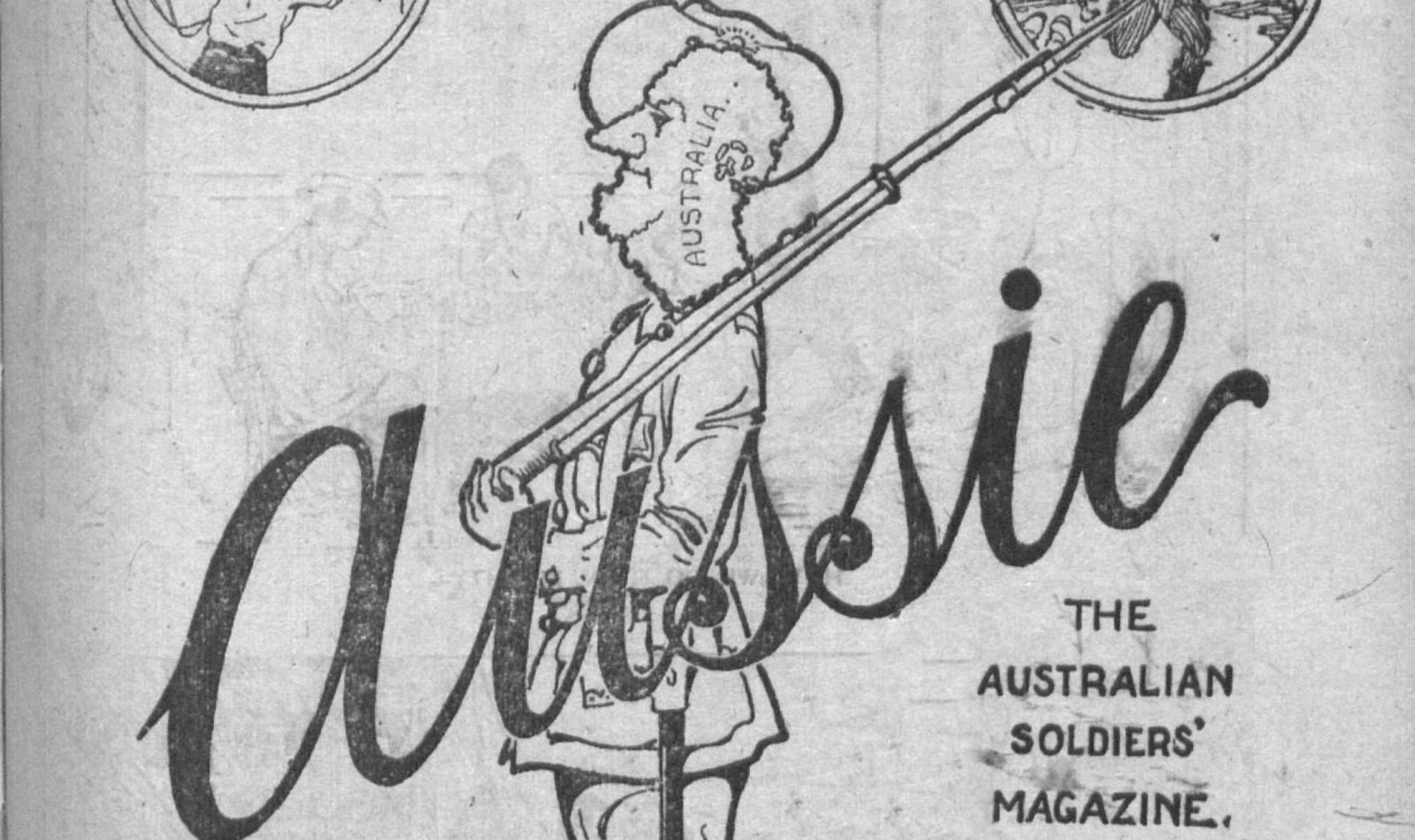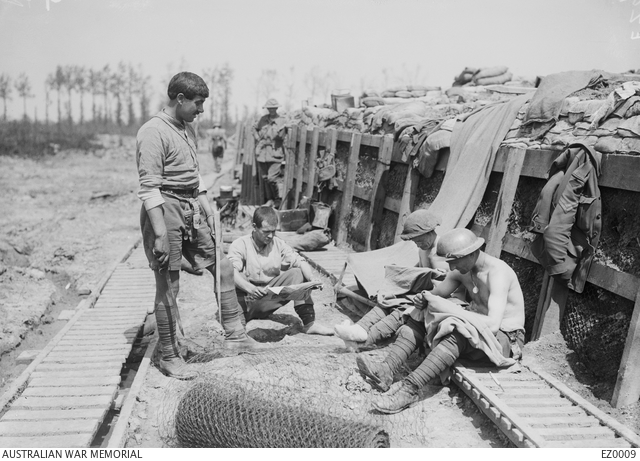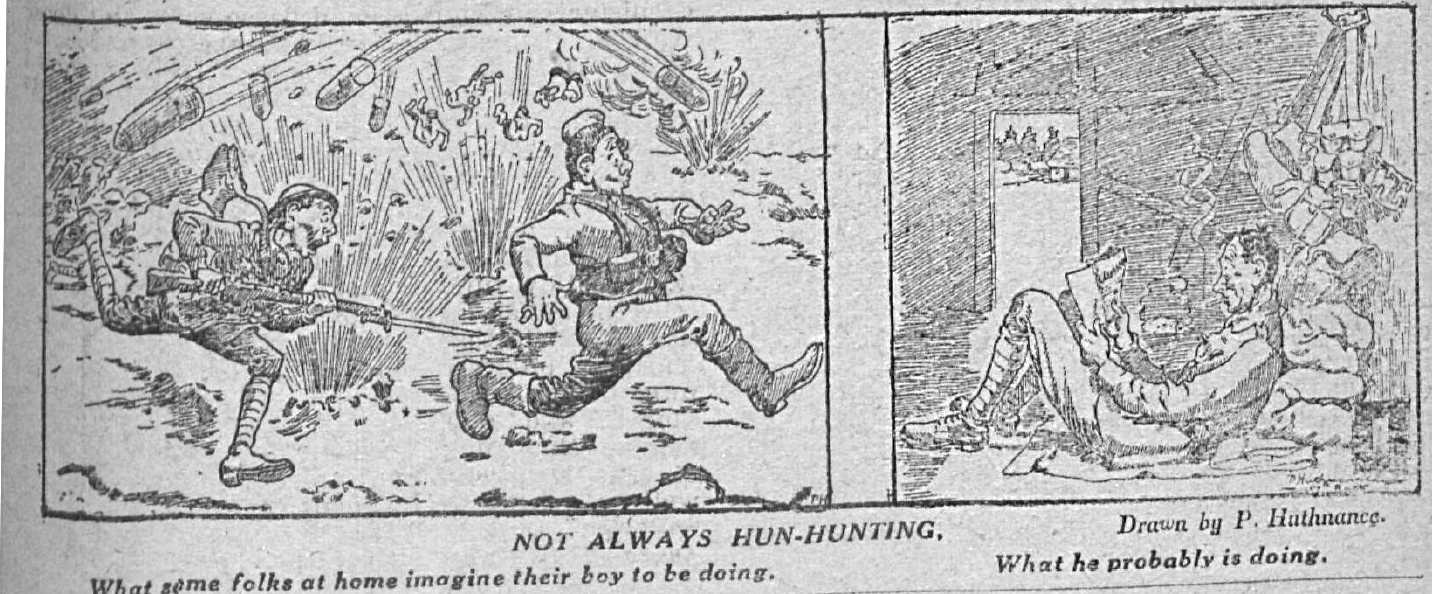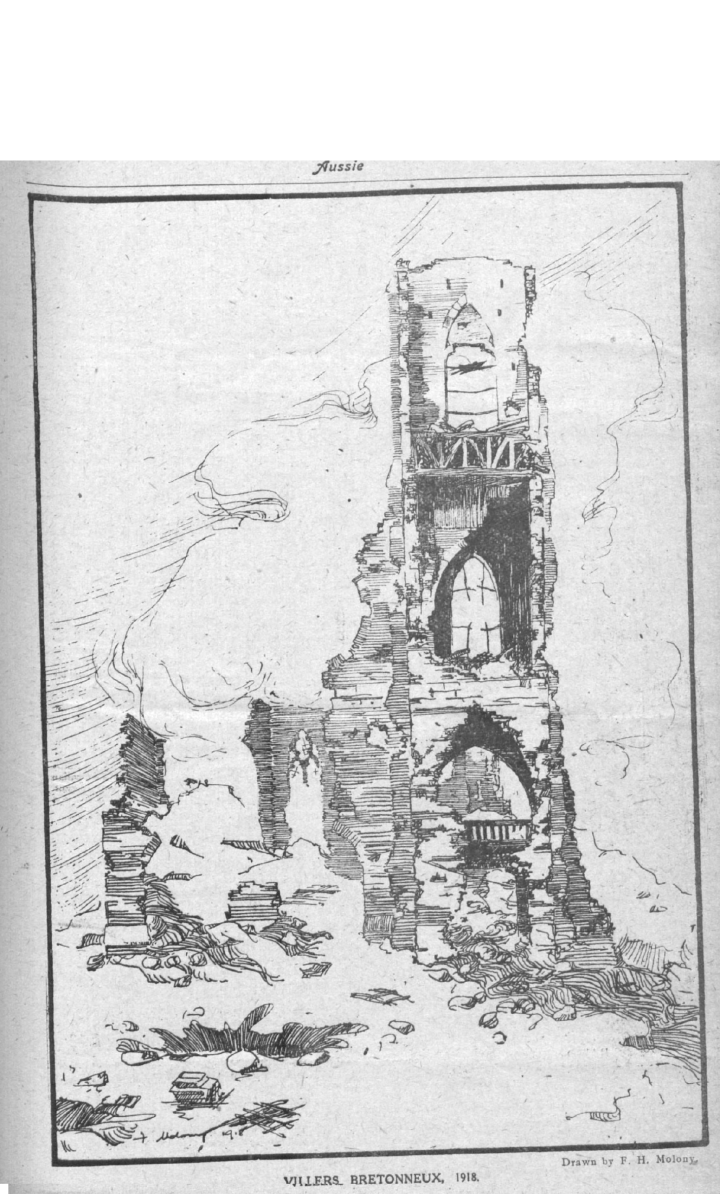
History
Back to NewsroomAussie: the Australian Soldiers' Magazine

Life in the trenches was challenging in the First World War. Faced with the prospect of the next assault, soldiers had to occupy their time and their minds. One occupation was reading the trench press.

Trench newspapers were written, published and distributed by the soldiers themselves. They reported, each in their own way, elements of daily life at the front, offering readers a raw and authentic view of the conflict, and creating a contrast with the censored press, from behind the lines.
Trench newspapers proliferated in the Allied trenches. They offered a wide range of content, with amusing, moving and artistic stories, and poems and drawings depicting the soldiers’ daily lives. Above all, these newspapers allowed them to forget the fighting for a while. Some one hundred British trench newspapers were published during the war plus four hundred French trench newspapers, including titles such as L’Echo du Boyau and Le Ver Luisant.
Soldiers of the Australian Imperial Force had their own trench newspapers too, like Aussie: the Australian Soldiers’ Magazine. Edited by a former journalist called Lieutenant Philip Lawrence Harris, the paper was issued once a month from January 1918. Initially 10,000 copies were printed monthly, but this soon increased to 100,000 copies.
The magazine invited soldiers to contribute to its content and bring it to life with stories, humourous anecdotes, poems and illustrations.

“AUSSIE belongs to you, lads, and its up to you to make him cheerful and attractive and worth knowing. Fill him with good stories, smart jokes and bright humour.
AUSSIE wants to have the Spirit of the A.I.F. And that can only be given by you in your own language and your own way.
That good trench incident that you know, that interesting story, that smart gag, that bright epigram – send them along. Don’t keep a good Aussie joke to yourself. Let’s all in the laugh. Tell it to AUSSIE. Don’t worry about literary style. Just jot it down and let’s have it. The Editor will soon lick it into shape. That’s his job.
And so, Aussies, let’s get together and make AUSSIE a bright light in the murky atmosphere of these dreary winter months -a cheerful storyteller, a good humourist, a clever wit, a cobber worth having. In short, make him a dinkum Aussie.”
Here are just a few examples of those “Aussiosities”:

“Sardines”
I had hoarded them for some time in the interests of war economy, when hunger got the better of me. Morning shift created an appetite, and why not sardines? So I handed them to the cook’s “offsider” to place in his oven, and retired to my dug-out to dream of sardines, warm and oily, succulent and appetising.
Suddenly my dream was broken. A violent explosion occurred outside. It was followed by a metallic clang and a chorus of oaths, in which I recognised the voices of the cook and his offsider.” Thoughts of bombs and 5.9’s filled my mind. Presently the “offsider” appeared, holding in his hand a small piece of metal. I expected to hear again the “just missed my head by an inch,” or “made a hole in my tunic” story. But there was something apologetic in his manner.
“Blew the blanky stove out!” he said. “Forgot to put a hole in the tin!”
P.D. PHILLIPS. – Aussie n°1 – January 1918


“Polygon Ridge”
I lie on the ridge and the moon is low
And I know away to the West
Are the tranquil homes we keep from the foe,
Though only our dead are blest.
Wild thoughts rush through my sweating brow
But I dream of you, dear, at rest.
I dream that you came on a silent ray,
Till you stood in a garb of white,
And I hear your voice in the turmoil pray
But I cannot follow your heavenly way,
For them that have died this night.
For only the faithful might,
Morn finds me still on this ridge of Hell,
Where the boys are holding fast,
With the dead and dying where they fell
And the wounded crawling past.
And the roar of the guns is the only knell
For them that have breathed their last.
My bones may bleach where we make this stand,
Or buried in Belgian loam,
But along the path where I saw you stand
My spirit shall ever roam-
That path in a muddy and blood-soaked land,
So far from my sunny home.
DARCY V. MEEK. – Aussie n°1 – January 1918
Aussie continued to be published even after the Armistice was signed, and troops were demobilised.
It was continued until December 1931 under the new name, Aussie the Cheerful Monthly, now ‘in civvies’.
